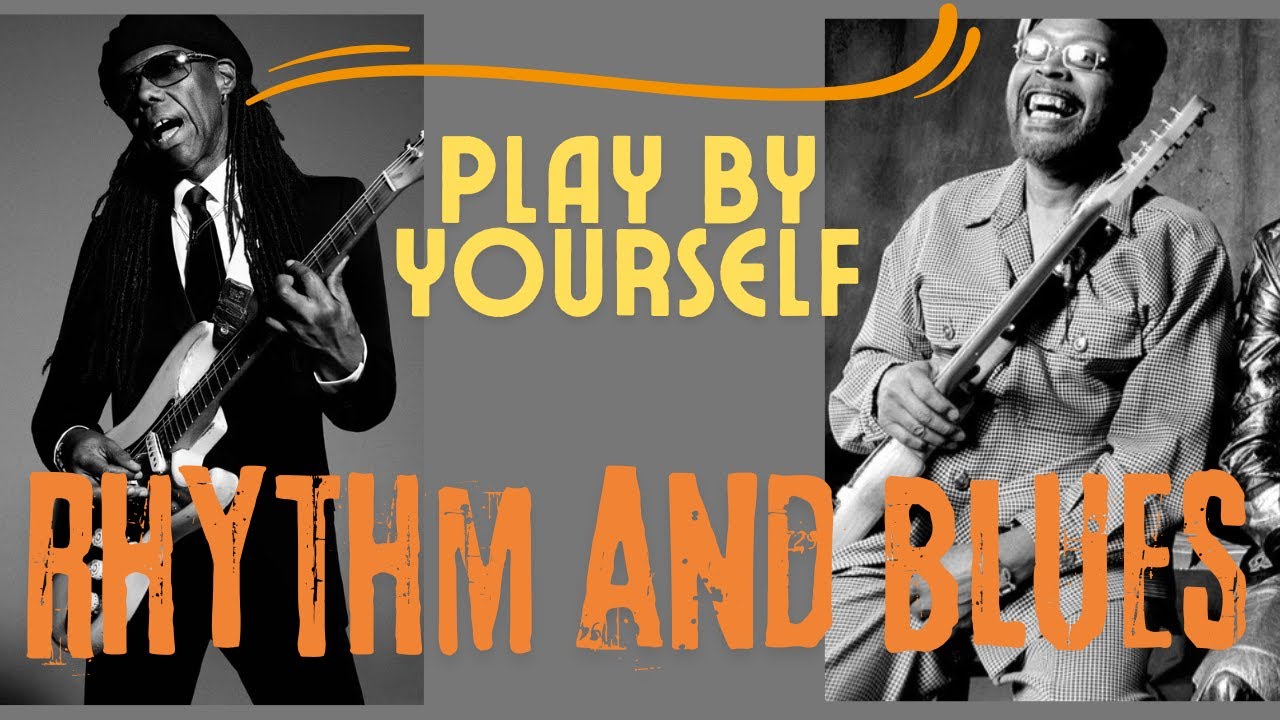You can find all jam tracks and TAB, alongside full length guitar courses at At Patreon -https://www.patreon.com/GuitarJoolz and www.guitarjoolz.com
Find my courses and song tutorials at Fretzealot – use the link for 2 MONTHS FREE!! https://www.fretzealot.com/joolz/ learn guitar with using the fretboard lights system and app.
This lesson has rhythm guitar and lead combined, so it can be played alone. It is a rhythm and blues idea in B minor, influenced by the likes of Nile Rodgers and Catfish Collins, 2 legends of Rhythm and Blues Guitar.
The piece is a 1,4,5 minor chord progession with the chords B min7, E min7 and F# min7 for part 1 with the addition of a G Maj7 in the 2nd part.
Nile Rodgers and Catfish Collins stand as monumental figures in the evolution of rhythm and blues (R&B) guitar. Both musicians, through their innovative approaches to rhythm, texture, and groove, reshaped the sonic landscape of the genre and left an indelible mark on generations of guitarists.
Nile Rodgers: The Architect of Chic’s Rhythmic Soul
Nile Rodgers, best known as the co-founder of the iconic disco band Chic, revolutionized the use of rhythm guitar in R&B and funk. His “chucking” style—a percussive, syncopated approach to strumming—became a defining element of not just his own sound but of the late 1970s and early 1980s music scene. Tracks like “Good Times” and “Le Freak” showcase his intricate yet minimalist approach. Rodgers often played sparse but rhythmically intricate patterns that created space for basslines, percussion, and vocals to shine. His Fender Stratocaster, affectionately named “The Hitmaker,” was a crucial tool in crafting his crisp, clean tone.
Rodgers’ influence extends beyond his own performances. As a producer and collaborator, he brought his rhythmic sensibility to albums by artists such as Diana Ross (“Upside Down”), David Bowie (“Let’s Dance”), and Madonna (“Like a Virgin”). His use of clean, repetitive rhythm lines, often played high up on the neck, emphasized groove and made the guitar a lead instrument in dance music. Rodgers demonstrated that less could indeed be more, inspiring a wave of guitarists to focus on rhythm and groove rather than flashy solos.
Catfish Collins: Funk’s Driving Force
Phelps “Catfish” Collins, the older brother of bassist Bootsy Collins, was another transformative figure in R&B and funk. As a member of James Brown’s band in the late 1960s and early 1970s, and later as part of Parliament-Funkadelic, Catfish was instrumental in defining the rhythmic backbone of funk music. His playing on tracks like “Sex Machine” and “Give It Up or Turnit a Loose” introduced the concept of the guitar as a percussive instrument, emphasizing tightly locked grooves rather than melodic complexity.
Catfish’s approach was rooted in repetitive, staccato riffs, often using muting techniques to add a percussive quality. This “chicken-scratch” style became a signature of James Brown’s funk sound. Collins also played a crucial role in the development of Parliament-Funkadelic’s cosmic funk style, where his gritty tone and interlocking rhythms created the foundation for their sprawling, groove-heavy compositions.
Combined Legacy
Both Rodgers and Collins shifted the guitar’s role from that of a purely melodic or harmonic instrument to a key rhythmic driver in R&B. Rodgers brought elegance and accessibility, while Collins embodied raw, primal groove. Together, their innovations formed the template for modern rhythm guitar in genres ranging from funk and disco to pop and hip-hop.
Contemporary artists such as Prince, John Mayer, and Cory Wong have cited Rodgers and Collins as pivotal influences. Their groundbreaking work continues to resonate, proving the enduring power of rhythm guitar in shaping the emotional and physical energy of music.
